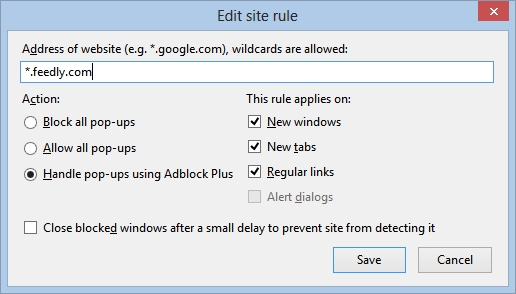After the update to 22 in FF, my desktop access to Feedly stopped. It kept stalling on the oauth screen.
After many hours of research, I found out it was actually my Adblock Plus Pop-Up blocker that was causing the drama. Disabling this allowed me to login to Feedly again. Of course, I did not want this disabled, so here is what worked. I don't actually know why it works, it just did.
In Adblocks pop-up options, go to File > Add site rule.

Add *.feedly.com and choose "Handle pop-ups using Adblock Plus". It doesn't work if you choose "Allow all pop-ups".
It should now look like this and you should be good to login now.
After many hours of research, I found out it was actually my Adblock Plus Pop-Up blocker that was causing the drama. Disabling this allowed me to login to Feedly again. Of course, I did not want this disabled, so here is what worked. I don't actually know why it works, it just did.
In Adblocks pop-up options, go to File > Add site rule.

Add *.feedly.com and choose "Handle pop-ups using Adblock Plus". It doesn't work if you choose "Allow all pop-ups".
It should now look like this and you should be good to login now.


Comments
Post a Comment